The Final Update: Flash Video Performance on Ion
by Anand Lal Shimpi on May 26, 2009 12:00 AM EST- Posted in
- Anand
It must be because this thing is so darn tiny that I don’t mind testing it all the time, but today’s short update marks the third follow up to our original Zotac Ion review.
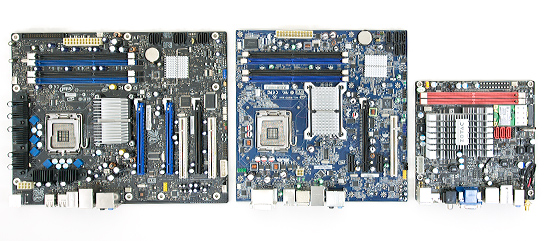
The original article crowned the Zotac Ion as the best Atom based mini-ITX board I’d ever encountered. It wasn’t a hard feat to accomplish, after all, there are only two other Atom based mini-ITX boards on the market and neither one offers a real GPU.
The first follow up addressed questions that readers of the first article had. Looking into things like the overclocking potential of the platform and additional detail on power consumption.
The second follow up addressed the Zotac’s wake-on-USB support, or lack thereof. Today I’m publishing what I hope to be my last update on this hardware until I get a new revision, but as always if there’s something you’d like to know don’t hesitate to ask.
Wake-on-USB Support: The Explanation
Zotac has been very proactive with getting me updates on its motherboard, I have their excellent North American PR rep to thank for that :)
As I mentioned in the last update, the Zotac Ion board won’t wake up from a S3 sleep state after activity on a USB device (e.g. moving your mouse, hitting a button on a media center remote, etc...). Zotac listed the problem as being a hardware issue that won’t get fixed until the next revision of the motherboard; early adopters are out of luck. I now have an explanation as to why.

The USB ports on the current version of the motherboard (PCB version 00) are powered by the 5V rail from the motherboard. When the motherboard goes into a S3 sleep state, 5V power is shut off, so the USB ports are completely off.
In the next revision of the motherboard (PCB version 01) standby power will be connected to the USB ports, allowing the ports to still be alive when the board is in S3. The manual shows you where you can identify what PCB revision you have.
I’m guessing externally powered USB hubs are able to pull the system out of sleep since the USB device is still on, but a USB device connected directly to the motherboard will be completely powerless in S3. The explanation makes sense to me; if you were wondering, now you know.
Flash Video Playback on the Ion: Delving Deeper
I personally get most of my “TV” from Hulu so I completely understand the desire to know how well Intel’s Atom and the Ion platform in general perform when playing back Flash Video.
A few readers requested that I look deeper into the Ion’s FLV performance, especially when the Ion was overclocked. I had some spare time today so I did just that.
In my first follow up article I found that the Ion could play, without a problem, standard sized 360p and 480p Hulu videos. Attempting to increase the video window size to full screen yielded a highly unplayable video. I wanted to investigate further.
I used the latest version of Adobe’s Flash 10 player as well as Internet Explorer 8 under Windows Vista Ultimate 32-bit. With a desktop resolution of 1360 x 768 I tried five tests:
1) 360p, video window popped out and maximized to desktop resolution
2) 360p in Hulu’s full screen mode
3) 480p, video window popped out and maximized to desktop resolution
4) 480p in Hulu’s full screen mode
5) 720p playing a Hulu HD video
I ran the five tests in two configurations; first with the Atom 330 at its default 1.60GHz clock speed and second with the Atom overclocked to 1.92GHz (the highest stable frequency I could overclock the Atom to).
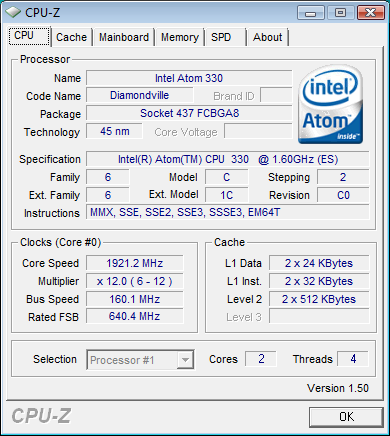
My impressions are in the table below:
| Scenario | Atom 330 @ 1.6GHz | Atom 330 @ 1.92GHz |
| 360p, maximized window | Some tearing, lower frame rate than default window, perhaps slightly smoother with hardware acceleration turned off? | Totally watchable, definitely lower frame rate but watchable |
| 360p, full screen | Totally unacceptable, not really higher CPU utilization than with a maximized window, but too choppy - distracting | Passable, not perfect but it can work if you can ignore some of the choppiness |
| 480p, maximized window | Slightly lower frame rate than the 360p test, but better picture quality so this may be a better option for some. Still annoying to watch due to lower frame rate. | Improved, I think passible. |
| 480p, full screen | Lots of tearing, somewhat more bearable than 360p full screen thanks to improved picture quality. I still prefer maximized window for higher frame rate. | Still choppy. |
| 720p HD | Completely unwatchable, CPU utilization > 90% | Still choppy but a bit better, painful but technically watchable |
While hardware acceleration was enabled in the Adobe Flash Player 10 settings, I can’t say that I noticed a performance difference with it enabled or disabled. I’m not really sure what it’s doing but it definitely didn’t help keep my framerate smooth when upscaling video.

CPU utilization was around 64% when watching a 360p stream in a maximized window
The only situation I would consider 360p full screen Hulu to be passable is when the system was overclocked to 1.92GHz. You’re far better off maximizing your browser window and dealing with the application border than running in Hulu’s seamless full screen mode.
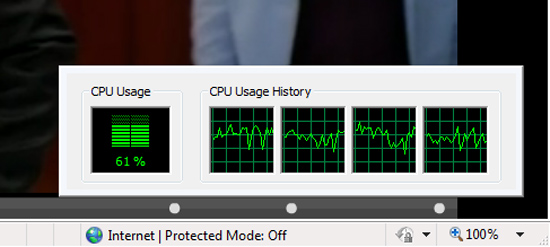
Overclocking the Atom dropped it to 61%, a small difference but noticeable
I will note that Hulu has difficulty playing in full screen on much faster systems as well, so I’m not sure we can really blame the Atom or Ion for its performance limitations here. It appears that video scaling under Flash is just not very efficient.
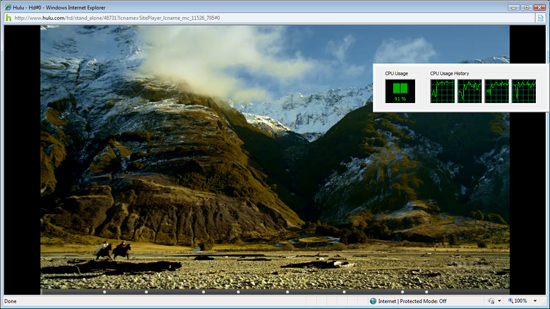
Hulu HD was basically unwatchable thanks to a > 90% CPU utilization
The HD stream is unplayable at stock frequencies but not because of scaling issues, since there's actually much less scaling being done from 720p to 1360 x 768. The HD stream falls victim to the Atom's limited CPU power, which overclocking helps overcome. I do still think that HD Hulu playback is too much for even an Atom 330 unfortunately.
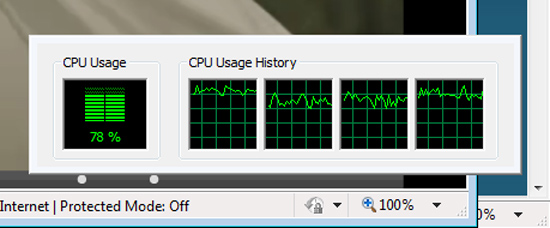
Overclocked, even HD hulu saw a benefit as CPU utilization dropped to below 80%
Overall the overclocking helped, but don’t expect any miracles. Be happy with smaller Hulu window sizes or be doomed to feel unfulfilled it seems. If NVIDIA wants a good case for CUDA, give us smooth FLV playback at any resolution and I'll be happy :)
With that said and done, it’s back to CPUs and SSDs for me.










56 Comments
View All Comments
TA152H - Wednesday, May 27, 2009 - link
It's considered legacy is an important reason? How does that make sense? It does the job, and better (since it is more efficient) and someone decided it's legacy, so we should stop using it and use the newer, less efficient way, just because it's new?Do you work for Microsoft?
sprockkets - Thursday, May 28, 2009 - link
Look, when USB came out, we had PII processors in the 233-300mhz range. Now we have processors in the ghz range, USB 2 and soon to come USB3.Are you really, really that short on CPU cycles for your, *gasp*, mouse? Do you understand that no laptop uses PS/2 anymore for anything? For that matter, they don't even use PATA anymore.
Your line of reasoning is 10+ years old. Once we kill the old BIOS, we will have no need whatsoever for BIOS floppies, PS/2 mice or keyboards or any other legacy scum from the 80s. I wish that motherboard makers start offering EFI which is still backwards compatible for those old OSes.
mindless1 - Thursday, May 28, 2009 - link
His line of reasoning is timeless. Don't fix what isn't broken, don't change things only for the sake of change. Don't remove features unless you're adding others to replace them, which isn't the case where as an onboard USB pin header or external hub would allow more USB devices than any sane person would care to connect.I will agree that the difference in CPU cycles for a keyboard or mouse is negligible, but there can be other reasons of practicality like already owning the PS2 peripheral or a KVM you'd like to use with the board, it isn't the same situation as buying an entire Dell system complete with everything from keyboard to speakers to monitor.
sprockkets - Thursday, May 28, 2009 - link
Well, USB fixes the quirks of PS/2, namely, putting the mouse and keyboard in the wrong ports, unplugging the mouse or keyboard and finding it not work until a reboot, or having to align the plug in.Can't mess up which USB plug you put it in, and I find it easier to put in a USB port than a PS/2, but only slightly. tell. Plus, you can use ports in the front of your computer for your mouse or keyboard. Never had that option with PS/2.
OK, so none of these was solving a really big issue, but it is nice to use the same port for everything.
MrPoletski - Wednesday, May 27, 2009 - link
umm, a PS2 mouse would require a PS2 controller which would require a bridge over to the PCI bus. This alone is about 10x as much effort as adding a single extra USB1 port.mindless1 - Thursday, May 28, 2009 - link
It doesn't require anything not already including in chipsets and super IO chips. It's not a matter of having another USB port for the mouse, it's a matter of, well actually there was no point to the argument in the first place as whether it's USB or PS2, either way it still has to have the 5VSB routed to it which was the design mistake Zotac made.Therefore, I'm in favor of it having a PS2 port because it already has USB too. More ports are generally better than fewer, especially when an inexpensive USB hub can be used when more are needed and it may actually be the better solution than loading down a small form factor PSU's 5VSB rail with several always-powered USB devices.
sprockkets - Thursday, May 28, 2009 - link
I'm surprised there is any super i/o in this board. I guess nVidia puts it in their chips. Most others ditched it long ago and use external chips (Intel).Of course, you could fit around 3-4 USB ports in the space of two PS/2 ports :)
TA152H - Thursday, May 28, 2009 - link
Not sure if you noticed, but they already have a PS/2 port for the keyboard.Depeche - Wednesday, May 27, 2009 - link
I agree with the PS/2 port. He makes a very good point. Those things were awesome and never fail. :)"A few readers requested that I look deeper into the Ion’s FLV performance, especially when the Ion was overclocked. I had some spare time today so I did just that."
Spare Time? I just read your bio you get 3 hours of sleep a day and you have spare time?! :)
Thanks for all the reviews on the board. I have been very anxious to get one. Keep up the good work. I am not going to get one until its been all worked out :)
tdktank59 - Tuesday, May 26, 2009 - link
What about Firefox... or Chrome... or some other light weight browser...I haven't looked into how lightweight IE is compared to FF... But most technically inclined people will be using other browsers than the default hideous IE...